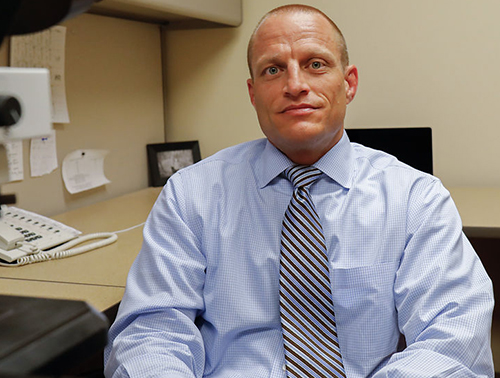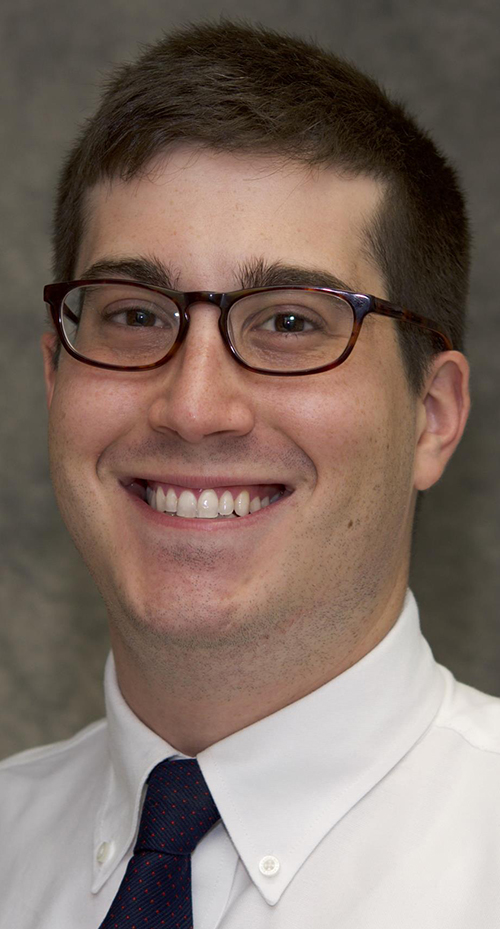Wall Street Journal (WSJ) reporter John Carreyrou’s investigation into former Silicon Valley darling Theranos is credited with turning the spotlight on the blood-testing company’s claims and questionable technology. However, Carreyrou’s investigation may never have happened without the assistance of Missouri pathologist Adam Clapper, MD, who tipped off the reporter to growing skepticism about Theranos’ finger-stick blood testing device.
Clapper’s involvement in Theranos’ fall from grace provides a lesson on why anatomic pathologists, clinical pathologists, and other medical laboratory leaders should cultivate strong working relationships with healthcare journalists who seek out expert sources when covering lab-related issues.
Dark Daily has written extensively about Theranos—once valued at nine billion dollars—and its founder and former CEO Elizabeth Holmes, whose criminal trial on nine counts of wire fraud and two counts of conspiracy to commit wire fraud is scheduled to begin this summer, noted the WSJ.
In 2018, Holmes and former Theranos President Ramesh “Sunny” Balwani settled a civil case with the Securities and Exchange Commission (SEC). Holmes agreed to pay a $500,000 penalty and relinquished control of Theranos. She also was barred from serving as Director of a public company for 10 years.
Theranos Investigation Would Not Have Occurred without Clapper
Holmes founded Theranos in 2003 when she was 19 years old. By 2013, Holmes had become a media sensation based on her claims that Theranos had developed a medical technology that could run thousands of clinical laboratory tests using the blood from a tiny finger-prick. And, she claimed, it could do so quickly and cheaply.
By 2015, Carreyrou’s exposé in theWall Street Journal revealed Theranos’ massive deceptions and questionable practices. His series of stories kickstarted the company’s downfall. However, Carreyrou acknowledges his investigation would not have occurred if it were not for pathologist Clapper.
“Without Adam Clapper, I am almost 100% sure that I wouldn’t have done anything,” Carreyrou told the Missourian. “It was the combination of him calling me and telling me what he had found out and how he felt and my feelings about the New Yorker story that really got me on the call of this scandal,” he said.

According to the Missourian, Clapper turned to Carreyrou because the reporter had impressed him as “very fact-oriented and fact-driven” during telephone interviews for a series Carreyrou had written the year prior on Medicare fraud.
“I could hear his wheels spinning in his head as we were talking the first time, then he definitely sounded interested and intrigued,” Clapper told the Missourian. “And then I could tell he was even more so because very soon thereafter—like half an hour after that initial conversation—he’d already started to do some research into Theranos.”
Ten months later, the WSJ published Carreyrou’s first installment of his series on Theranos.
“The fact that this tip originated from a guy in Columbia, Missouri, thousands of miles from Silicon Valley—who never spoke to Elizabeth Holmes, who had no connection to the company or even to Silicon Valley other than he read about her claims in a magazine and knew a lot about this by virtue of being a pathologist—tells you that the people who put in all the money in [Theranos] didn’t spend enough time talking to experts and asking them what was feasible and what wasn’t,” said Carreyrou.

The lawyers defending Holmes against criminal fraud charges are contending Carreyrou “went beyond reporting the Theranos story” by prodding sources to contact federal regulators about the company’s alleged frauds and “possibly biased the agencies’ findings against [Theranos],” Bloomberg News reported.
The Wall Street Journal, however, stands behind Carreyrou’s reporting, which later was published as book, titled, “Bad Blood: Secrets and Lies in a Silicon Valley Startup.”
Carreyrou told New York Magazine he doesn’t blame reporters for hyping Holmes and the technology she touted.
“You could make a case that maybe they should have done more reporting beyond interviewing her and her immediate entourage,” he said. “But how much is a writer/reporter to blame when the subject is bald-face lying to him, too?”
Nonetheless, the Theranos scandal offers a lesson to pathologists and clinical laboratory professionals in the importance of building good working relationships with healthcare journalists who not only must accurately report on healthcare breakthroughs and developments, but also need someone they can trust for an unbiased opinion.
—Andrea Downing Peck
Related Information:
Blood, Fraud and Money Led to CEO’s Fall from Grace
Theranos Founder Elizabeth Holmes to Face Trial Next Year on Fraud Charges
Theranos, CEO Holmes, and Former President Balwani Charged with Massive Fraud
Hot Startup Theranos Struggled with Its Blood Test Technology
The Pathologist and ‘The Inventor’: How a Columbia Doctor Helped Take Down Theranos
Elizabeth Holmes Blames Journalist for Theranos Troubles
Pathologists Predicted the Theranos Debacle, but their Voices Were Missing from Most News Coverage



